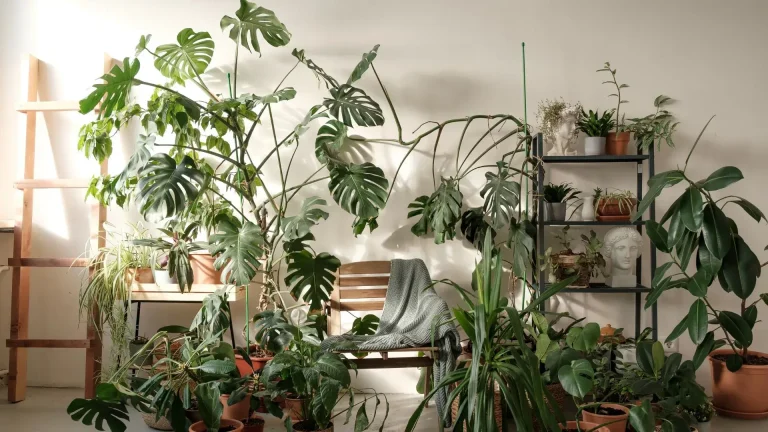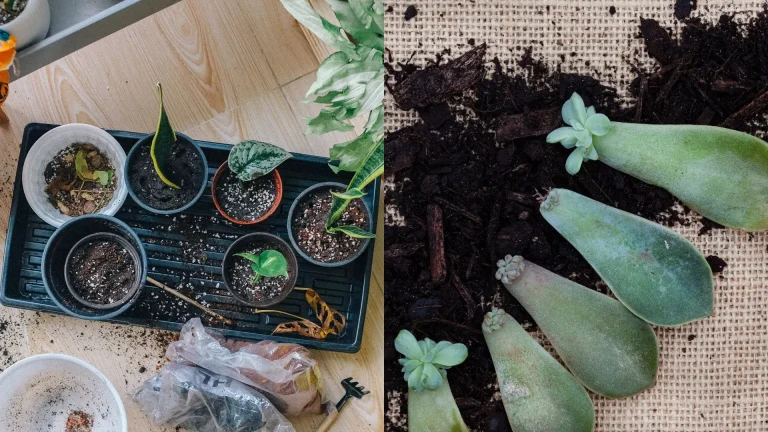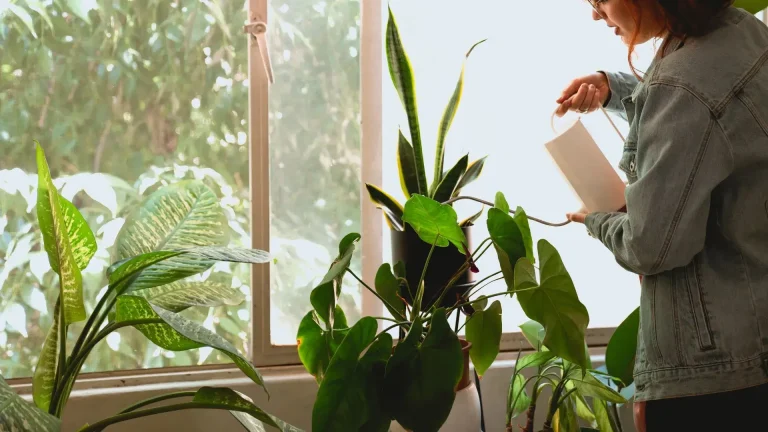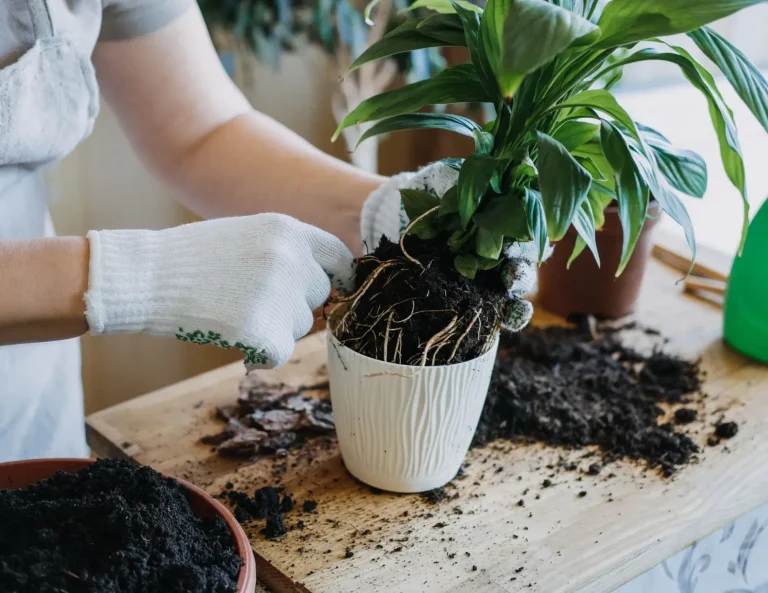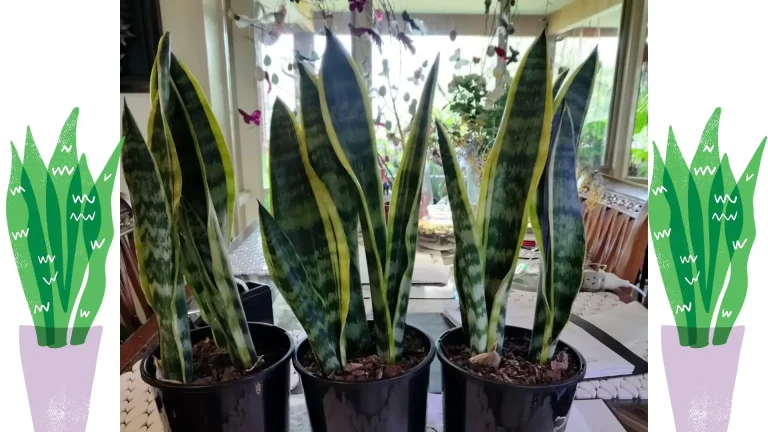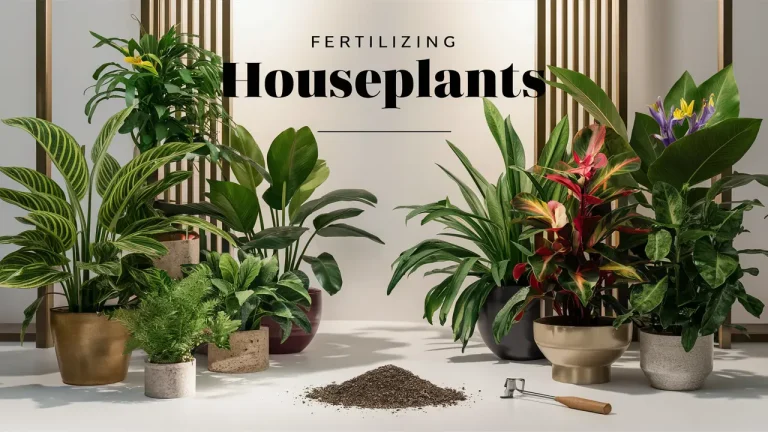Pruning Houseplants: Simple Steps to Healthy Growth
Pruning houseplants is an essential practice for maintaining their health and beauty. Regular pruning not only keeps your plants looking tidy and vibrant but also contributes to their overall well-being by encouraging healthy growth and preventing the spread of pests or diseases.
In this guide, we’ll explore why pruning houseplants is so important, when to do it, and how to prune effectively. Plus, we’ll share tips to avoid common mistakes, so you can give your plants the best possible care.
Table of Contents
Why Pruning is Essential for Houseplants
Pruning does more than just tidy up your plants; it has several critical benefits that keep your houseplants thriving:
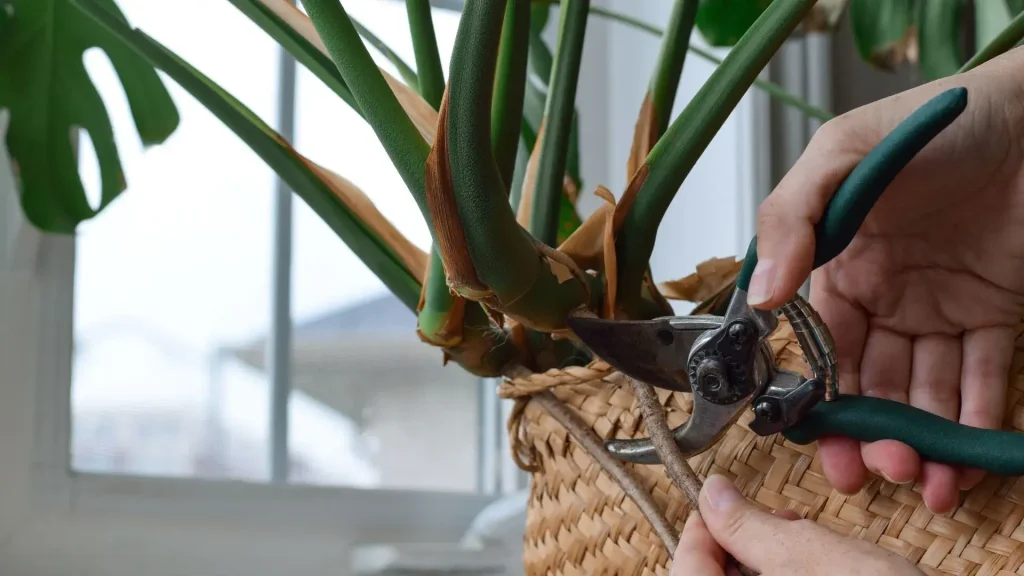
Encourages Healthy Growth
Pruning houseplants removes dead, diseased, or damaged leaves and stems, allowing the plant to direct its energy toward producing new, healthy growth. It ensures that nutrients are not wasted on struggling or non-viable parts of the plant.
Improves Shape and Appearance
Strategic pruning helps maintain your plant’s desired size and shape, enhancing its aesthetic appeal. This is particularly important for plants that grow unevenly or become leggy over time.
Promotes Air Circulation
Removing overcrowded or overlapping foliage improves airflow around the plant, reducing the risk of fungal infections and pest infestations.
Stimulates New Growth
Pruning encourages plants to produce new shoots and leaves, resulting in a fuller, lusher appearance. For flowering plants, trimming spent blooms can stimulate the growth of new buds.
When to Prune Your Houseplants
Knowing the right time to prune ensures your plant recovers quickly and benefits from the care you provide.
Seasonal Guidelines
- Spring and Summer (Active Growth): This is the ideal time for pruning. Plants are actively growing, which means they can heal quickly and produce new foliage.
- Fall and Winter (Dormancy): Avoid heavy pruning during this time, as plants grow more slowly and may struggle to recover. Stick to removing dead or yellowing leaves if necessary.
Signs Your Plant Needs Pruning
- Yellowing or Browning Leaves: These are dead or dying and should be removed to prevent the plant from wasting energy on them.
- Leggy or Sparse Growth: Long, thin stems with fewer leaves indicate the plant could benefit from pruning to promote branching.
- Overcrowding or Uneven Shape: If your plant looks messy or overgrown, pruning can help restore balance and improve its overall look.
Tools Needed for Pruning
Using the right tools is essential for clean, effective cuts that won’t damage your houseplants. Here’s what you’ll need:
Essential Tools
- Pruning Shears or Scissors: Invest in sharp, high-quality shears or scissors to make precise cuts without crushing stems.
- Rubbing Alcohol or Disinfectant: Always sterilize tools before and after pruning to prevent the spread of bacteria or pests.
- Gloves: Useful for handling plants with irritating sap, spines, or thorns (e.g., Ficus elastica or cacti).
Tips for Tool Maintenance
- Keep blades sharp to ensure smooth cuts. Dull tools can tear stems, making it harder for plants to heal.
- Clean and store tools in a dry place to prevent rust and extend their lifespan.
How to Prune Houseplants Properly
Pruning isn’t complicated, but following the proper steps ensures your plants stay healthy and thrive.
Step-by-Step Guide
- Inspect the Plant:
- Look for yellowing, browning, or damaged leaves.
- Identify leggy stems, overcrowded areas, or uneven growth.
- Start with Dead or Damaged Leaves:
- Cut yellow, brown, or wilted leaves at the base of the stem. This immediately improves the plant’s appearance and prevents energy waste.
- Shape the Plant:
- Trim long, unruly stems to restore balance and symmetry. For a bushy effect, make cuts just above a node (the point where a leaf or branch emerges).
- Encourage New Growth:
- For plants like pothos or philodendrons, prune just above a leaf joint to stimulate branching and fuller growth.
- Finish with Cleanup:
- Remove fallen leaves or debris from the soil to discourage pests. Wipe your tools with rubbing alcohol before storing them.
Special Considerations
- Avoid removing more than 20% of the plant at once to prevent shock.
- For flowering plants, prune only after blooms have faded.
- Handle succulents and cacti gently, as their stems and leaves are delicate.
Stay organized and keep your plants thriving with our easy-to-use Printable Pruning Tracker!
Pruning Tips for Specific Houseplants
Different houseplants have unique needs when it comes to pruning. Here’s how to approach some popular varieties:
- Tropical Plants (Monsteras, Philodendrons, etc.):
- Remove yellow leaves and aerial roots sparingly to maintain their natural appearance. Trim leggy stems to encourage bushier growth.
- Bushy Plants (Pothos, Spider Plants, etc.):
- Regularly trim long stems to encourage fullness. Pinch back growth at the tips to stimulate branching.
- Flowering Plants (African Violets, Peace Lilies, etc.):
- Deadhead spent flowers to encourage reblooming and remove any dead leaves to tidy up the plant.
- Succulents and Cacti:
- Remove dried leaves or pups (offsets) carefully to avoid damaging the plant. Use sterilized tools to make clean cuts.
Common Pruning Mistakes to Avoid
Avoid these common pitfalls to ensure your plants benefit from pruning:
- Over-Pruning: Removing too much foliage can shock your plant and stunt its growth. Stick to a gradual approach.
- Using Dirty Tools: Dirty tools can introduce diseases or pests. Always sterilize them before and after use.
- Pruning at the Wrong Time: Avoid heavy pruning during a plant’s dormant phase (fall and winter).
- Ignoring Plant-Specific Needs: Each plant has unique pruning requirements. Research your plant’s needs to avoid over-trimming or cutting in the wrong spots.
After-Pruning Care
Help your plants recover from pruning with these tips:
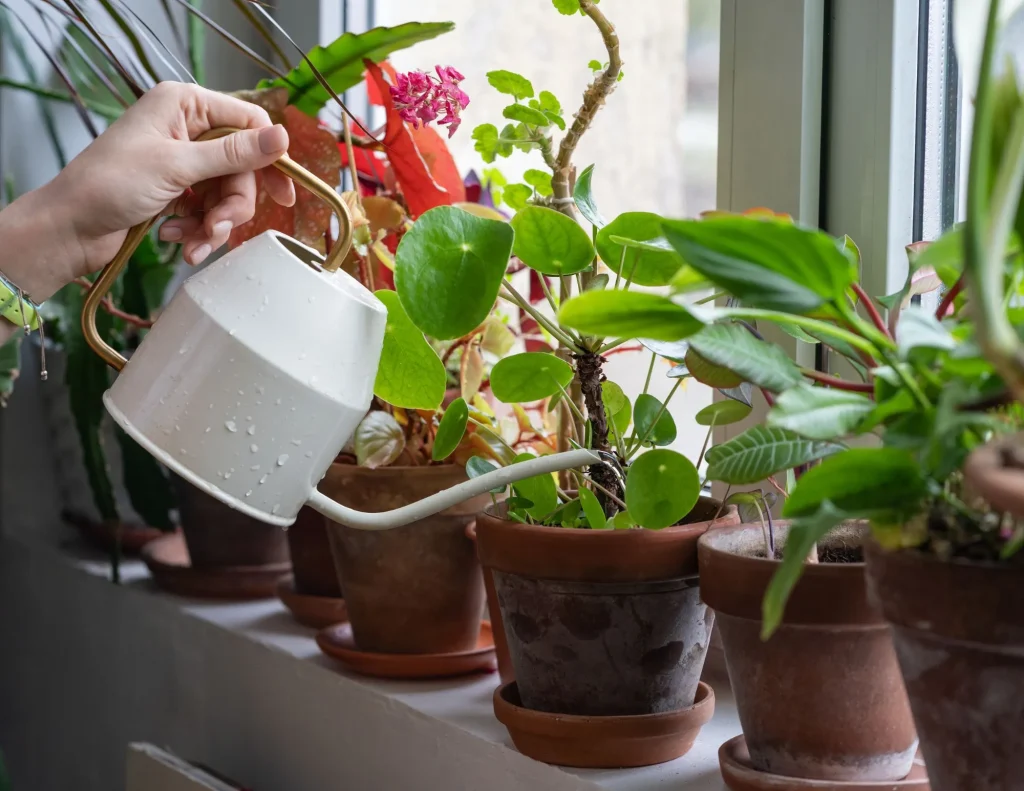
- Water Moderately: Provide a light watering after pruning to support recovery but avoid overwatering.
- Optimize Light Conditions: Place the plant in bright, indirect light to encourage new growth and reduce stress.
- Monitor for Stress: Watch for signs of shock, such as drooping leaves or slow recovery, and adjust care as needed.
Plants That Shouldn’t Be Pruned
While pruning is beneficial for most houseplants, some plants either require minimal pruning or don’t respond well to it. Over-pruning these plants can harm their health and appearance.
Examples of Plants That May Not Tolerate Pruning Well
- Orchids: These plants generally don’t need much pruning beyond removing spent flower stems or damaged leaves. Excessive pruning can disrupt their growth cycle.
- Dracaenas: These plants should only be pruned sparingly to maintain shape or remove dead leaves. Over-pruning can stunt their growth.
- Sensitive Plants: Prayer plants, ferns, and calatheas have delicate foliage and can suffer stress or damage from unnecessary pruning.
Why Some Plants Thrive Better with Minimal Pruning
Plants with slow growth rates or delicate structures often do not require regular trimming. For these plants, focus on removing only dead or diseased parts and allow their natural growth patterns to shine. Minimal pruning reduces the risk of stress and keeps them healthy over time.
Final Thoughts
Pruning is a simple yet powerful way to keep your houseplants healthy, beautiful, and thriving. By understanding when and how to prune, using the right tools, and tailoring your approach to each plant’s needs, you’ll create a lush indoor garden that’s a joy to care for.
Your Next Step: Take a close look at your houseplants today. Identify areas that could use pruning, follow the tips in this guide, and enjoy the transformation! Have questions or pruning success stories? Share them in the comments below!

